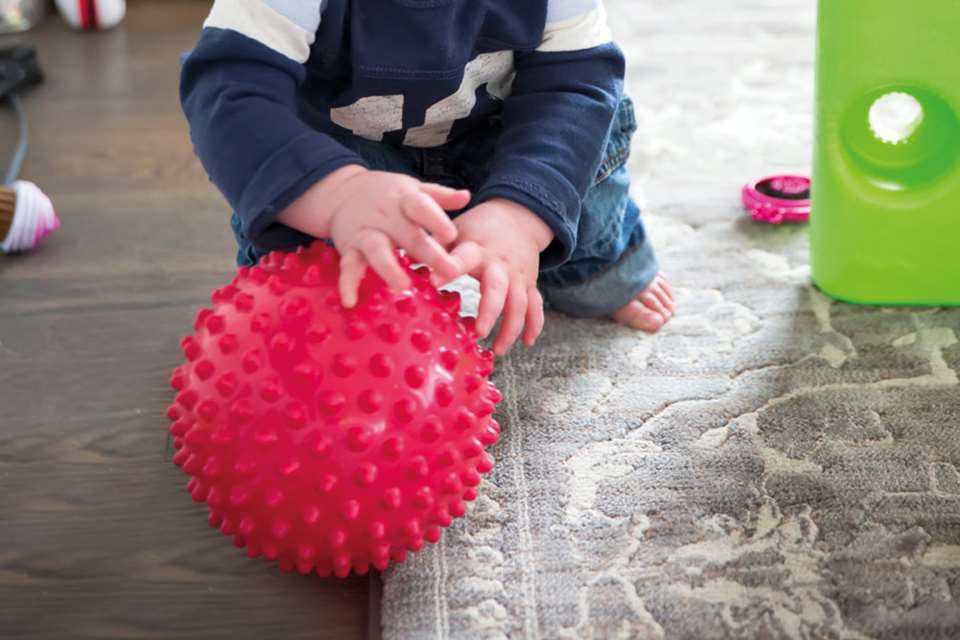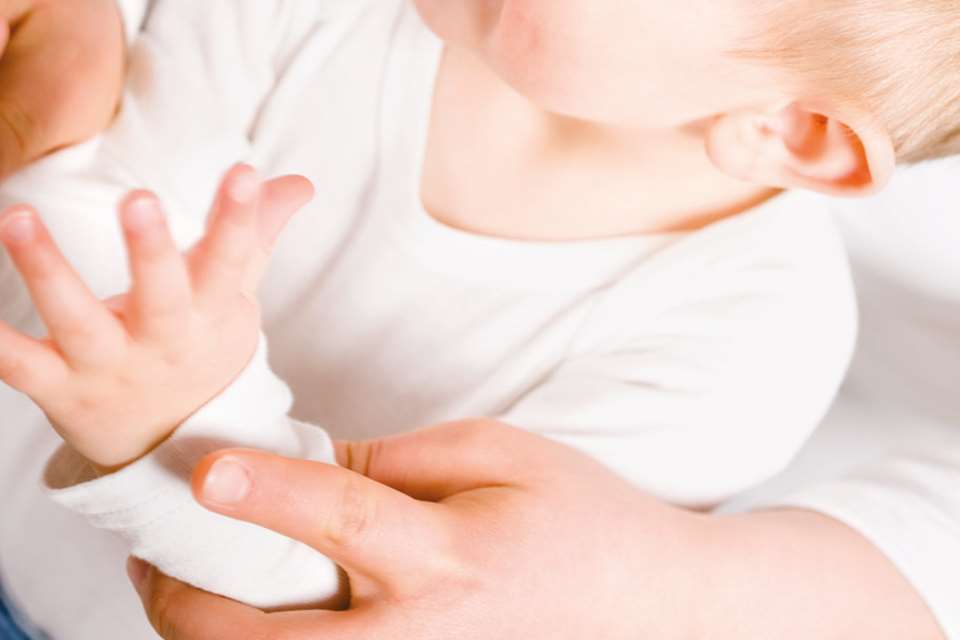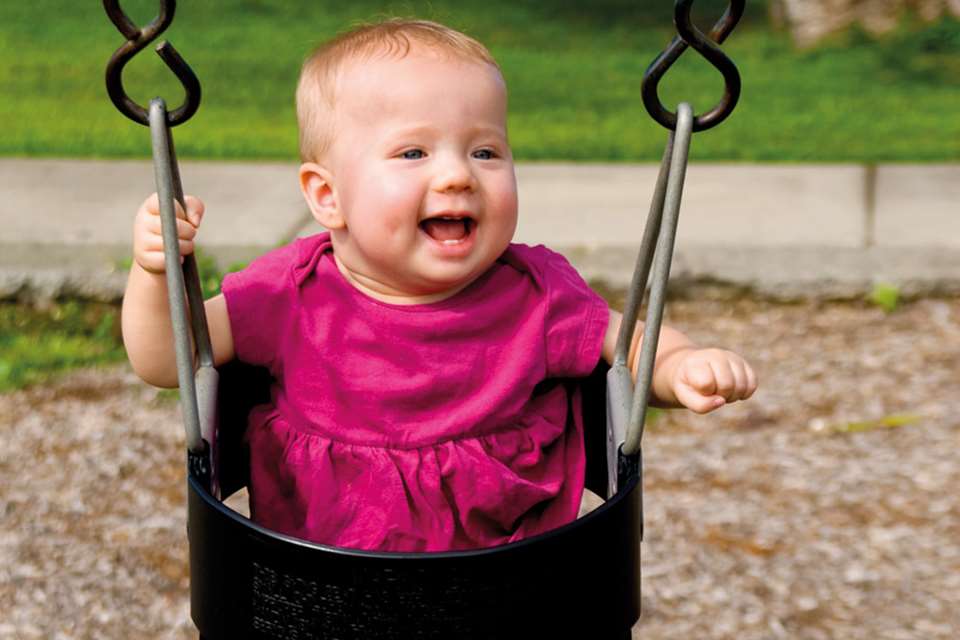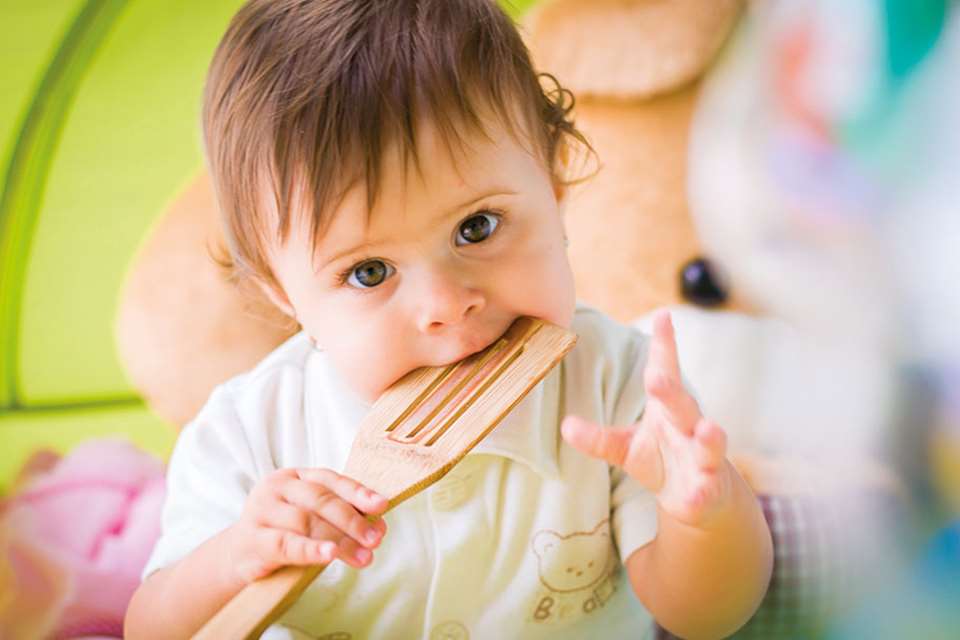EYFS Activities: Birth to two… dropping games
Penny Tassoni
Monday, September 19, 2016
Babies and toddlers aren’t just dropping objects for the fun of it, Penny Tassoni explains
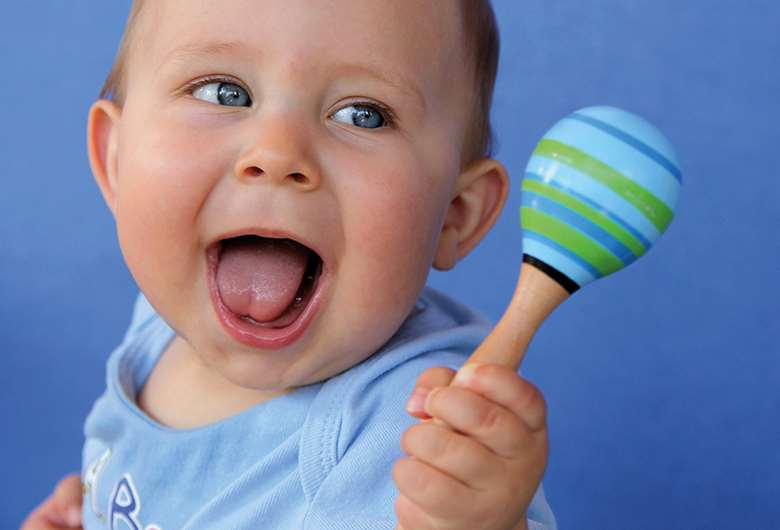
By nine months or so, most babies have discovered a wonderful game. They drop a spoon, sock or toy onto the floor and watch as an adult picks it up. Once the item is returned it is soon dropped again. While few adults see this as an educational game, it actually has plenty of developmental benefits that are worth exploring.
WHEN AND HOW
Most babies and toddlers discover this game by chance when they inadvertently drop a spoon or beaker from a highchair. Once you have seen that this is happening, you can develop it into an activity in its own right. While you could carry this activity out using a highchair, the danger is that under-twos will associate the highchair with dropping things and this could prove problematic at mealtimes.
Choose a time when the baby or toddler is not tired or hungry.
Put the child on your lap with a ball, spoon or other safe object.
Drop the item and say a phrase such as ‘Oh no!’
Pick up the item and pass it to the baby or toddler.
See if they drop it in imitation.
Make eye contact and repeat the phrase if they do.
Repeat the game until the baby or toddler becomes restless.
Use a different object to vary the game.
DEVELOPMENTAL BENEFITS
From a developmental point of view, dropping games are wonderful opportunities for children to explore a range of concepts including size, sound and shape. Dropping games also help babies and toddlers to lead and initiate a game. Dropping games:
help babies and toddlers learn to play and take turns (social skills)
help children associate key words with actions and objects (language)
encourage babies and toddlers to explore the relationship between size, shape and speed (cognitive)
support co-ordination as children handle objects and learn to control them (physical)
provide babies and toddlers with an opportunity to lead a game and so develop confidence (emotional)
support children’s attachments with their key person and other children (emotional).
NEXT STEPS
Once you feel that a baby or toddler has mastered dropping as a game, you might like to introduce posting games where babies and toddlers drop items down tubes.
WHAT TO OBSERVE
There are several aspects of development that are worth observing:
Hand movementsWatch how babies manipulate objects before dropping them. Look to see whether they consciously are able to drop an item.
Vocalisations If you always say a phrase when an item is dropped, does the baby or toddler try to imitate the sound?
Communication Observe how babies and toddlers communicate that they want you to pick up an item that they have dropped. Do they point to an item or make a vocalisation?
Eye contact Note whether babies and toddlers initiate eye contact with you before dropping the item, thus showing intent to play.
HOME LEARNING
Many parents may not realise that their child is attempting to play with them as they throw items overboard. It is worth explaining to parents that this is part of development and can encourage hand-eye co-ordination as well as language. If parents start to use the same phrases when items are dropped, their babies and toddlers will soon learn associated words.
While in the ideal world, parents will have plenty of time to play dropping games, the reality is that babies and toddlers will sometimes choose inconvenient moments to try to play – such as dropping food or beakers at mealtimes, or shoes, hats and socks while in a pushchair. It can be helpful for parents to know that using a distraction technique will be the best way to bring the game to an end. This might mean showing the child a book, pulling funny faces or taking the child out from the highchair to do something else.
RHYME TIME
Many lovely rhymes have a theme of dropping or falling that can be used with children, including the classic ‘Ten green bottles’, which can easily be adapted or shortened or adapted to, for example, ‘Ten green bottles sitting on the wall…’
You can hear the tune and see the words to this traditional rhyme by visiting www.youtube.com/watch?v=Ak7kedzR8bg.
BOOK TIME
Look out for some simple picture books that illustrate objects that are familiar to babies and toddlers. This can help them associate objects with sounds and so develop their language skills. A favourite baby book that does this is The Baby’s Catalogue by Allan and Janet Ahlberg.


